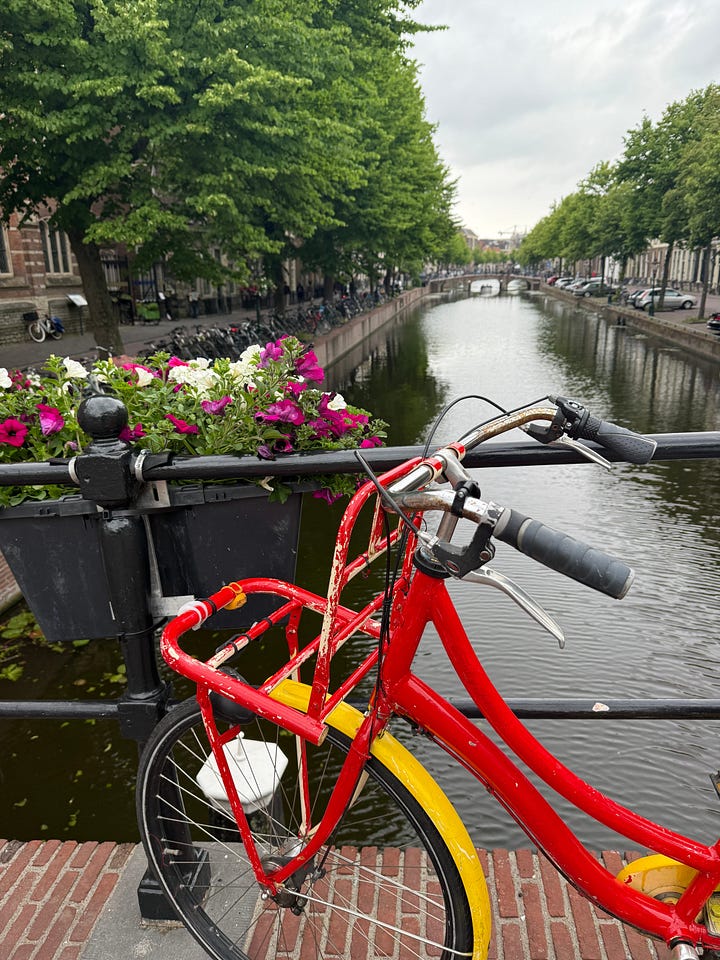Netherlands Diary, Day 1: Leiden
the "little Amsterdam" that's huge on charm and slim on tourists


My husband, son, and I touched down at Schipol at 10:30 a.m. and boarded a train to Leiden. After the eleven-hour flight from SFO, the gently rocking train through a flat green landscape from Schipol to Leiden nearly put me to sleep. At one point, my husband said, “Look, tulip fields!” This, indeed, was Holland.



